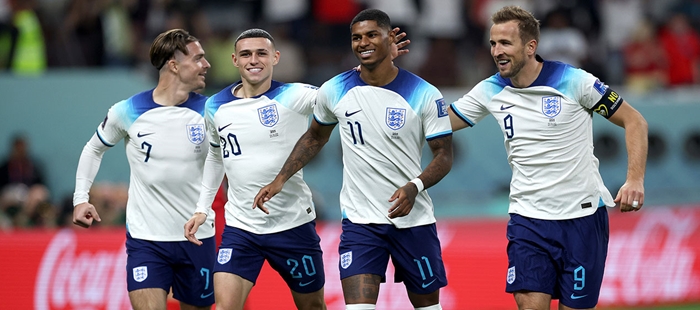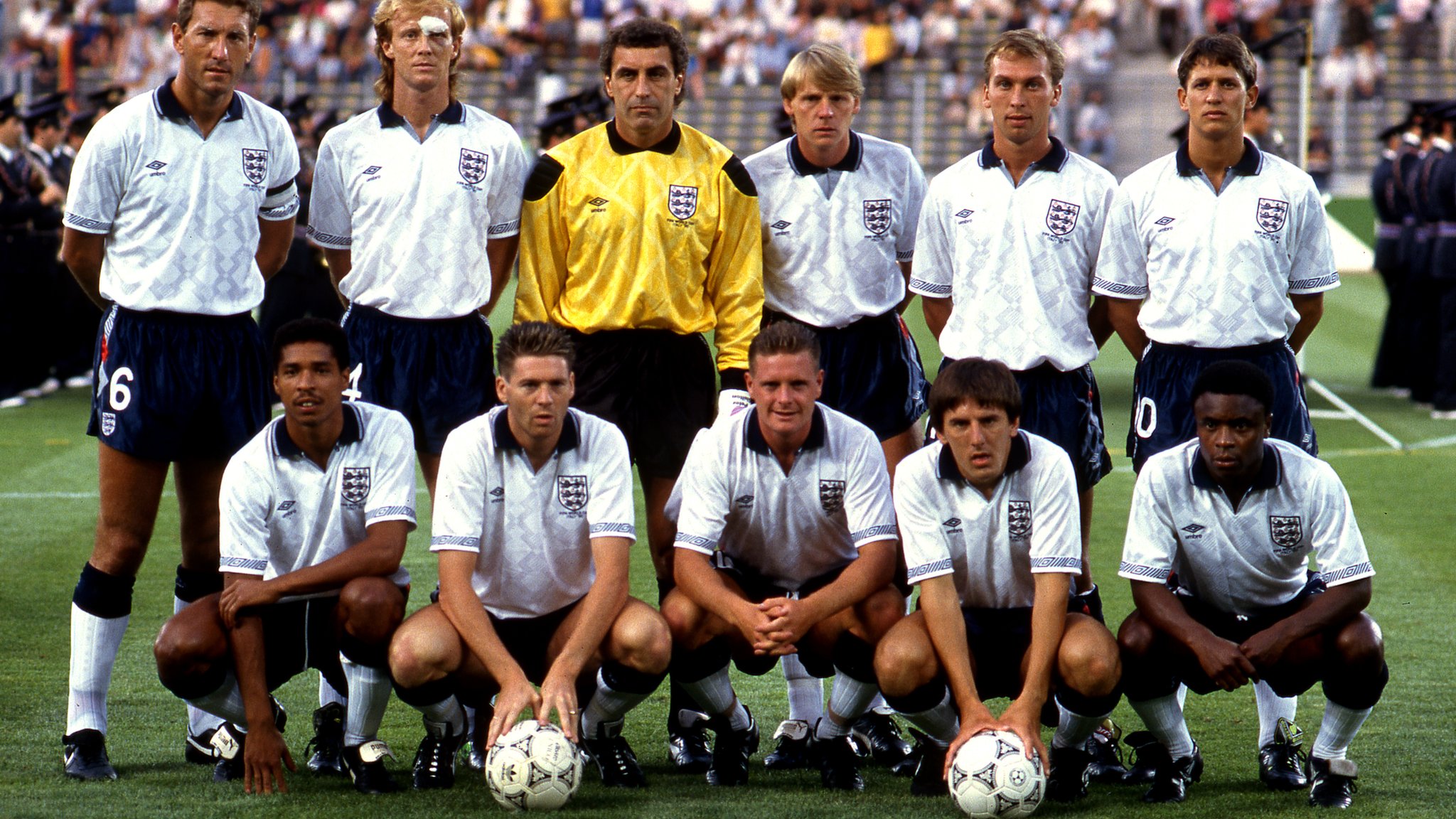Table of Contents
Introduction: England FC Kits

England FC kits have undergone a remarkable transformation over the years. What started as basic attire has evolved into a symbol of national pride and footballing prowess. We’ll take you through this journey, showcasing how each era brought its unique flair to the kits.
The Classic Era: England FC Kits Through the Decades
Let’s turn back the clock and revisit the classic era of England’s football kits. From the simple, elegant designs of the 1950s to the experimental styles of the 1970s, these kits were the foundation of England’s football fashion.
1950s to 1970s: The Early Classics
The 1950s to 1970s saw kits that were simplistic yet iconic. During this time, England’s kits were primarily made by Umbro and featured minimalistic designs with a focus on comfort and functionality.
In the 1950s, the England football kit consisted of a plain white shirt, paired with navy shorts and white socks. This clean and traditional look became synonymous with English football, representing the team’s elegance on the field. As the 1960s rolled in, subtle changes were introduced, such as the addition of a red trim on the collar and sleeves.
In the 1970s, England embraced a more experimental approach to kit design. The iconic red away kit, famously worn during the 1966 World Cup final, became a beloved symbol of the team’s success. Additionally, bold elements like oversized collars, contrasting stripes, and vibrant colors were incorporated into the kits, reflecting the fashion trends of the era.
1980s to 1990s: The Modern Evolution
The 1980s and 1990s witnessed a shift towards modernization in England’s football kits. The famous Three Lions crest was prominently displayed on the shirts, symbolizing the team’s heritage and pride. Manufacturers like Admiral and Umbro continued to innovate, introducing new materials and technologies to enhance performance on the pitch.
During this period, England’s kits saw a blend of classic elements and contemporary designs. The iconic 1982 kit, for instance, featured a bold red stripe across the chest, complemented by navy shorts and red socks. As the 1990s approached, geometric patterns, intricate detailing, and vibrant color combinations became more prevalent in the kits, reflecting the evolving fashion trends of the time.
2000s to Present: Embracing Tradition with a Modern Twist
In the 21st century, England’s football kits have struck a balance between embracing tradition and incorporating modern elements. The classic white home kit remains a constant, symbolizing the team’s heritage and unity. However, manufacturers have introduced innovative features like moisture-wicking fabrics, advanced ventilation systems, and ergonomic designs to enhance player performance and comfort.
Furthermore, special edition kits have paid homage to iconic moments in English football history. From the golden anniversary kit commemorating England’s World Cup victory in 1966 to the retro-inspired kit celebrating the team’s success in the 1990 World Cup, these limited-edition designs have captivated the fans and sparked nostalgia.
Ranking the Top 10 England FC Kits
Now, let’s delve into the heart of our journey – ranking the top 10 England FC kits. From historical classics to modern marvels, we explore what makes each of these kits stand out.
England FC kits are a symbol of national pride and footballing heritage. This journey through the top 10 kits is a celebration of design, history, and the unforgettable moments they represent.
The 1966 World Cup Kit: A Triumph in Red
The kit that adorned England’s heroes during their historic 1966 World Cup victory. This iconic red kit is synonymous with Geoff Hurst’s legendary hat-trick and England’s glorious triumph on the world stage.
1982 Admiral Home Kit: A Design Revolution
The 1982 World Cup saw England donning a kit with bold blue and red shoulder stripes, a daring departure from traditional designs. It symbolizes an era of innovation in kit design and football.
1990 Umbro Third Kit: The Blue Rarity

This unique blue kit, adorned with a distinctive graphic pattern, was a rare sight in the Italia ’90 World Cup. It’s remembered for its bold design and the rare occasions it graced the pitch.
1998 Home Kit: A Modern Classic
/origin-imgresizer.eurosport.com/2018/06/07/2350581-48910390-2560-1440.jpg)
The 1998 kit featured a striking central red stripe, blending classic and contemporary styles. It’s forever linked with Michael Owen’s breathtaking goal against Argentina in the 1998 World Cup.
2001 Umbro Home Kit: Simplicity and Elegance
Embodying simplicity and elegance, this kit is etched in history for England’s stunning 5-1 victory over Germany in Munich, a match that revitalized English football pride.
2010 Away Kit: The St. George Cross

A modern homage to the 1966 kit, the stylish red 2010 away kit featured the Cross of St. George. It represents a blend of tradition and contemporary design in football fashion.
2018 Nike Home Kit: A New Era of Success

Worn during England’s surprising run to the 2018 World Cup semi-finals, this kit is praised for its clean and simple design, symbolizing a new era of hope and success for English football.
Euro ’96 Home Kit: A Home Soil Hero

Associated with England’s semi-final run in Euro ’96, this kit is beloved for its distinctive collar design and the euphoria of a tournament held on home soil.
2023 Kit: Tradition Meets Modernity

The latest in England FC kits lineup, the 2023 kit, is already earning accolades for its sleek design that beautifully marries traditional elements with a modern touch.
1990 Umbro Home Kit: The Italia ’90 Classic

This classic white kit from Italia ’90 is remembered for England’s gripping semi-final against West Germany. Its simple design is a nostalgic reminder of one of England’s most emotional footballing chapters.
Conclusion: The Legacy of England Football Kits
These top 10 kits are more than just fabric and colors; they are emblematic of England’s football legacy, each telling a story of triumph, heartache, and unyielding spirit. They are not just worn; they are lived in and remembered, capturing the essence of what it means to support and play for England.







